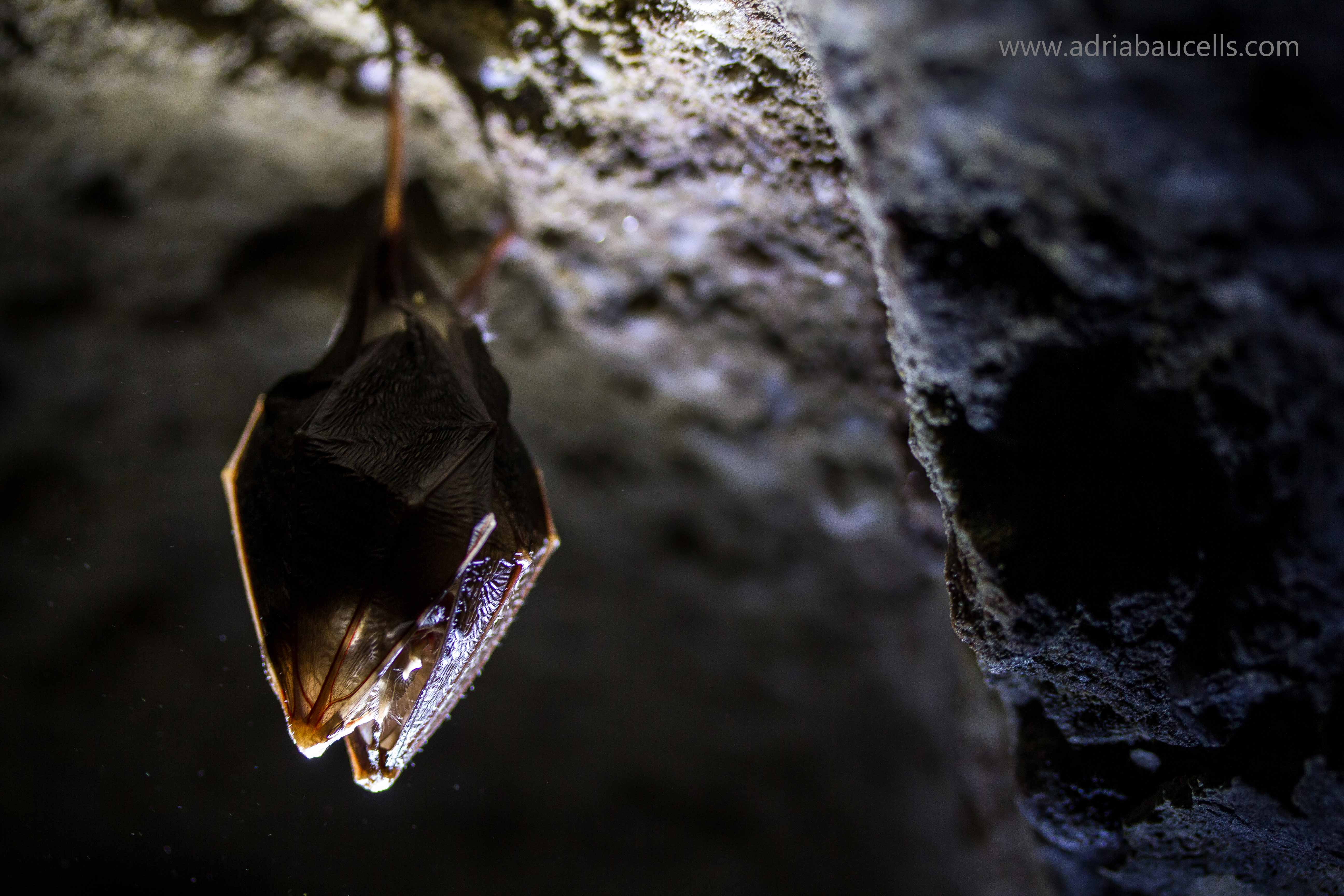ChiroRoosts
Participation is open to anyone who is interested into being part of a long-term monitoring project.
This protocol allows to study bats that roost in subterranean sites both natural (caves and balms) or artificial (mines, churches and other edifications) and is thought so that a wide variety of volunteers and collaborators can participate.
Caves and complex mines: speleologists and experienced volunteers.
Roosts in building roofs in churches or other edifications: anyone with or without previous experience.
Sampling dates
Winter: November 15th - February 28th
Spring: March 1st - May 15th
Summer: May 16th - August 31st
Autumn: September 1st - November 14th

PERMANENT ChiroRoosts
In the PERMANENT ChiroRoosts you must choose a roost, cave, mine or specific building and conduct at least 1 census of the colony per each season of the year continuoulsy over time. This modality is the one that provides with more valuable information, as it allows to monitor the evolution of the bat community in a specific place.
SPORADIC ChiroRoosts
In the SPORADIC ChiroRoosts you must contribute data from censuses of underground roosts like caves, mines, or buildings at any date of the year without the need to repeat it. This modality is useful if, for example, you visit some place where there are bats and you are able to count the number of individuals in the colony.
Do you want to participate?
If you want to participate, don't wait any longer and register! Once you've registered you will be able to contribute the data from your roosts. If you have any doubt of you wish to participate in some training course, you may contact us through info@ratpenats.org
Instructions
Identification manual of subterranean bat species
In order to identify the species in situ, use the identification manual for cave-roosting bats below:
Identification guide to bat species in caves and mines
Suggested methods to conduct the censuses
The methodology to conduct the census will depend on the roost typology. It is highly encouraged to first contact the museum and get personal advise for each case:
- Mine/Cave/Tunnel WITHOUT possibility to access:
- Experience: high.
- Using an infrarred video camera during the emergence + later visual counting of the recorded footage.
- The camera must cover all the entrance of the roost and the light source should be intense enough to cober all the shadows.
- The duration of the census spans from before the sunset until the emergence finished (30' without detecting any bat) and you should stay away from the entrance during the recording.
- Mine/Cave/Tunnel/Attics WITH possibility to access and see the bats:
- Experience: variable depending on the complexity of the roost.
- Using a photo + later visual counting.
- The photo always must be vertical from the inferior part of the colony, never slanted, nitid and at top resolution so you can zoom it and conduct accurate counts.
- You need to use a flash or soft artificial light to see the bats, but always avoiding any disturbance.
In order to identify the species in situ, use the Identification guide to bat species in caves and mines.
- Roofs or other roosts WITHOUT the possibility to inspect the interior:
- Experience: low.
- Using observation and direct counts of the bat emergence at sunset with the aid of a soft ligth.
- The duration of the census spans from before the sunset until the emergence finished (30' without detecting any bat). The use of manula counters is recommended.
We recomend that, in caso of detecting the presence of a potentially occupied roost, you should contact us.
Sending the results
Access at the page to design and register your roost and upload you observations HERE.
Resources
Training courses
Periodically we organize training sessions to provide the necessary knowledge to carry out this protocol.
Keep an eye on our social networks and sign up for our newsletter to be updated.
Other materials
Counting using an infrarred video camera and lights:
Counting using an infrarred camera and lights:
Counting using a thermal camera:
Visual counting during emergence: